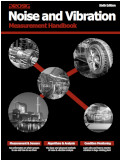Strain Gauge Basics – Part 2 – Shunt Calibration
As mentioned in the previous post, in order to relate the measured voltage difference across the bridge circuit to a strain measurement, we need a way of calibrating the system. In most systems, including the Prosig acquisition systems, this is done by including a high-precision shunt resistor across one of the legs in the bridge. For example, the following diagram shows a quarter-bridge circuit with a shunt calibration resistor, RS, across the bridge completion resistor R2.






 Sometimes we are asked about the differences between an acoustic camera and a sound intensity probe and which of the two is better for a particular application. There is no straightforward answer as they are quite different pieces of equipment, used for measuring different things. An acoustic camera is a tool used to locate and analyse sound sources, usually both steadystate and dynamic phenomena. The intensity probe is used to find the sound intensity at a particular position, usually a steadystate phenomena.
Sometimes we are asked about the differences between an acoustic camera and a sound intensity probe and which of the two is better for a particular application. There is no straightforward answer as they are quite different pieces of equipment, used for measuring different things. An acoustic camera is a tool used to locate and analyse sound sources, usually both steadystate and dynamic phenomena. The intensity probe is used to find the sound intensity at a particular position, usually a steadystate phenomena.
